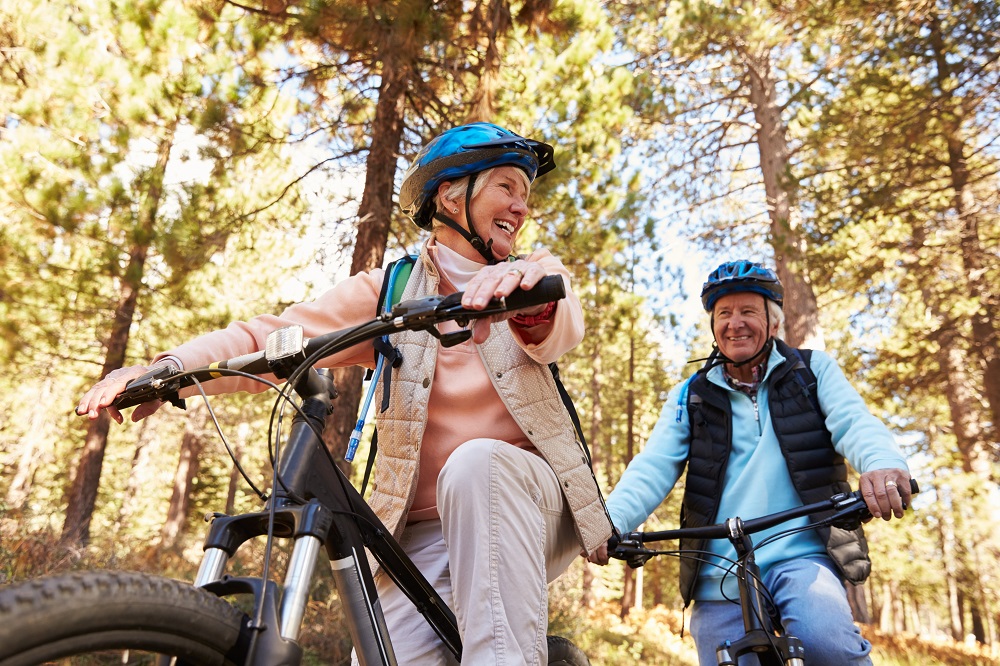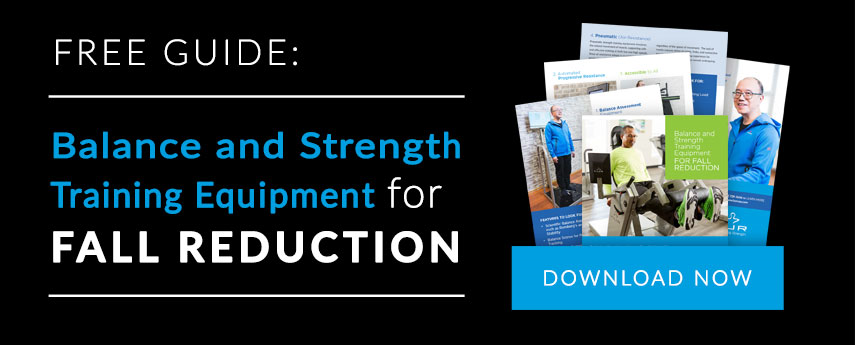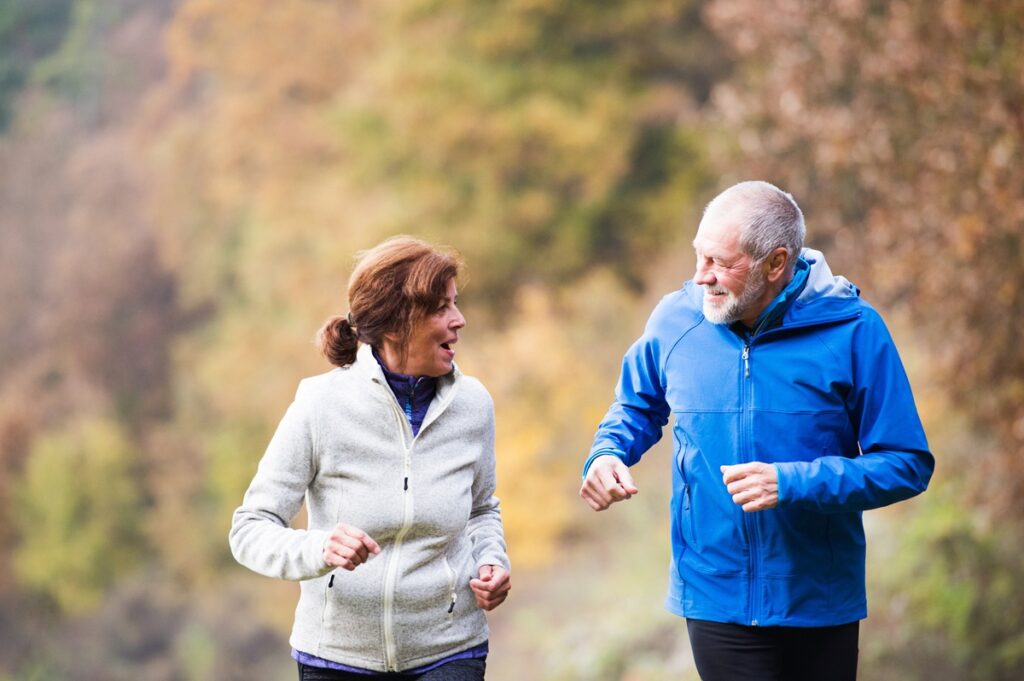Why Every Senior Should Turn their Workout into a Balancing Act
Our ears contain a remarkable balance epicenter called the vestibular system that helps us know where we are in space at any given point in time. Are we lying down or standing up? Are we walking up the stairs, or sitting in a chair? The vestibular system detects the answers to questions such as these and communicates that information to the brain.
The system is also directly connected to the parts of the brain that controls our ability to maintain balance. When the vestibular system senses that we’re falling, it communicates this to the balance centers in our brain. In turn, our brain signals to the rest of our body that it’s time to take appropriate measures to prevent a fall.
This happens so quickly and automatically that we’re not aware of all the signals zipping back and forth from our ears to our brains and throughout the rest of our bodies. But anyone who’s instinctively stretched out their arms to steady themselves or brace for a fall has experienced it happening.
The vestibular system is important to our remaining upright.
But, as we age, vestibular system cells begin to die off.
As you can imagine, this has a significant impact on balance. Without a high-functioning vestibular system, our brains have trouble understanding where we are in space, setting us up for dangerous situations.
For example, let’s pretend you’ve just stubbed your right toe. To compensate, you automatically shift all your weight to the left foot. If your vestibular system doesn’t quickly detect this shift in balance, it’s less likely that your brain will send out danger signals that would otherwise protect you from tilting too far left and taking a fall.
In addition to a fuzzy and sluggish vestibular system, most of us experience diminished eyesight as we age. Most seniors are likely to have poor depth perception and low sensitivity to contrast, especially at night. Making matters even more challenging is the fact that aging comes with a natural loss of muscle mass, strength, speed, reflexes, and coordination.
In our younger years, our bodies react swiftly to the threat of a fall. But, as we age, that reaction time slows, sometimes considerably.
Health problems such as arthritis, stroke, multiple sclerosis, and Parkinson’s disease weaken our aptitude for good balance even further. But, even in otherwise healthy seniors, the body’s natural deterioration can cause us to fall before we even realize we’re at risk.
This is why balance training is so important for older adults – especially in combination with strength training.
When strength training and balance exercises work together, significant improvements can be made in our ability to remain footloose and fancy free. Research shows that regular resistance training increases bone density, keeps joints supple, and counteracts age-related muscle loss. This not only equips our bodies to be able to prevent a fall, it makes injury less likely if we do.
A quick word to trainers and care professionals about balance assessment.
What follows is a list of 5 exercises specifically designed to challenge active seniors. If you’re a trainer or care professional who works with older adults, adding these into your clients’ training plans will make a significant improvement in their ability to balance.
How much of an improvement? You’ll only know the answer to that question with regular assessment.
The HUR SmartBalance is an excellent tool for assessing balance and accurately identifying users with a high risk for falling. In addition, the HUR SmartBalance offers customized training recommendations and easy comparison of previous balance tests, so that you can track improvements. And improvement tracking is one of the most effective motivators to continue balance training.
If you don’t have access to a HUR SmartBalance, there are other ways to incorporate regular assessment and improvement tracking into your clients’ training programs. Accurate fall risk assessment includes a thorough evaluation of both internal and external risk factors.
At a minimum, an accurate, effective Balance Risk Assessment should include these 5 elements.
5 Balance Training Exercises to Challenge Active Seniors
The following exercises are designed to help active seniors who are also engaged in regular strength training to combat age-related declines in balance. The exercises rely on a moderate to high level of muscle strength and flexibility.
Regardless of ability level, it’s important to have a stable chair, wall, or railing within arms’ reach during or all five of these exercises.
1. Balance on One Leg
Stand straight, with both feet together, and the abdominal muscles contracted slightly to support the back. Lift one foot, with the knee facing forward or to the side. Hold the position first with eyes open, then with eyes closed. Switch feet and repeat.
2. Leg Swings
Stand on one leg and raise the other leg three to six inches off the floor. Keep your arms straight at your sides or place hands on your hips. Slowly swing the raised leg forward and backward, touching the floor mid-swing for balance, keeping hips stable, and the upper body upright. Complete the swing 4 or 5 times, touching the floor as the foot swings forward and backward.
Then repeat the move 4 or 5 times without allowing the foot to touch the ground. Before placing the foot back down on the ground, swing it out to the side, then back to center, repeating the motion 4 or 5 times. Place both feet back on the ground and repeat with the other foot.
3. Around the Clock
Stand up straight, with abdominal muscles slightly contracted and both hands on hips. Raise one leg to balance fully on the other leg. As you visualize a clock, raise the arm on the same side as the raised foot straight overhead to 12. Slowly move the arm to the side (three), then circle down to nine without touching the raised foot back to the floor. Switch to the opposite arm and leg and repeat.
4. One-Legged Squat
Stand straight, with feet hip-width apart. Point the toes of the left foot, and slide it out in front of the body, with toes just barely touching the floor as you do. Raise both hands straight out in front of the body so they are parallel to the floor. As you move the foot forward, push hips back and down into a one-legged squat position.
Only lower to a point that is challenging, but still comfortable, and be sure that the knee doesn’t extend beyond the toes. Keep the chest upright, eyes forward, and your arms out front. Slowly return to starting position, raising the body first, then pulling the outstretched foot back to the center. Switch feet.
5. Single-Leg Dead Lift
Hold a 1 to 10-pound weight in the right hand. Raise the left foot off the floor and tightly engage the abdominal muscles. Bend forward at the hips while reaching toward the ground with the right hand, lowering the weight towards the floor.
As you do, raise your left leg straight out behind you for counterbalance. Tighten the buttocks and slowly return to the starting position. Keep your knees relaxed and back flat throughout the movement. Switch legs.
Learn more about the impact that regular balance training can have on older adults, and how the HUR SmartBalance makes it easier than ever for next-generation rehabilitation and senior living providers to assess risk and provide solutions.
Together we can create a new age of strength and balance for the seniors in our communities.







